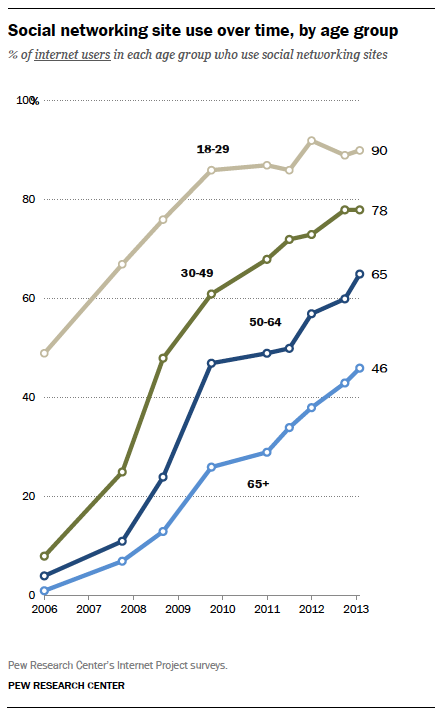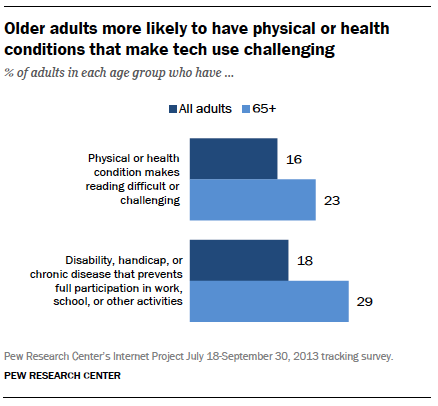A recent comScore report revealed that 38 percent of smartphone users in the United States aged 25 to 34 are now on Snapchat, as well as 14 percent of those 35 or older. Those numbers are on the rise from three years ago, when they were five percent and two percent respectively.
With the growing number of users on social media, the incentive for elderly people use the newest technology and apps is growing.
What’s the reality?
America’s seniors have historically been late adopters to the world of technology compared to their younger compatriots, but their movement into the internet continues to deepen. According to data from the Pew Research Center, those 65 and older saw the biggest growth in internet use of other demographic groups, gaining 150 percent between 2009 and 2011.

The Pew report also indicates that although the popularity of internet use is going up among the elderly, it has not yet reached majority status. Only 46 percent use social networking sites such as Facebook, among internet-using 65 and older adults, well below the national average of 73 percent of adult internet users.
However, the report said there are few older adults using Twitter
Just six percent of online seniors report using Twitter, compared with 19 percent of all adult internet users. In total, that means that just three percent of all American seniors are Twitter users. That’s probably because Twitter in essence is a reincarnation of chat rooms, even though it does not look like a texting program. Twitter is designed to connect networks with strangers and chat with them, which isn’t the purpose of the elderly going on social media in the first place.
Most elders said they would need assistance in learning social media
Many of them need assistance in learning how to use new devices and digital services, meaning they are facing unique barriers to increasing their adoption numbers.
According to another report from Pew Research Center, many seniors have physical conditions or health issues that make using these tools a challenge. 23 percent of older adults indicate that they have a “physical or health condition that makes reading difficult or challenging.” While 29 percent have a “disability, handicap, or chronic disease that prevents them from fully participating in many common daily activities.”

Among seniors who do use the internet but do not currently use social networking sites such as Facebook or Twitter, 56 percent said they would require assistance if they wished to use these sites to connect with friends or family members. Just 24 percent of these seniors feel comfortable jumping into the social media environment without someone there to guide.
But elders who currently use a social networking site of some kind have more confidence in their abilities. Some 68 percent of these seniors would feel comfortable using social media on their own to connect with family or friends.
Help are getting better
Anita Kamiel, founder and the owner of David York Home Healthcare Agency, wrote on The Huffington Post, computer classes at senior centers are growing in popularity. Classes on computer basics as well as instruction in using email and other social media platforms such as Facebook have become more common.
The Jewish Council for the Aging in Washington, D.C. offers an entire Senior Tech program. DorotUSA.org has a whole program called University Without Walls specifically designed for seniors who are home-bound where they participate in stimulating classes and lectures through their computer or tablet.
 CGTN America
CGTN America


